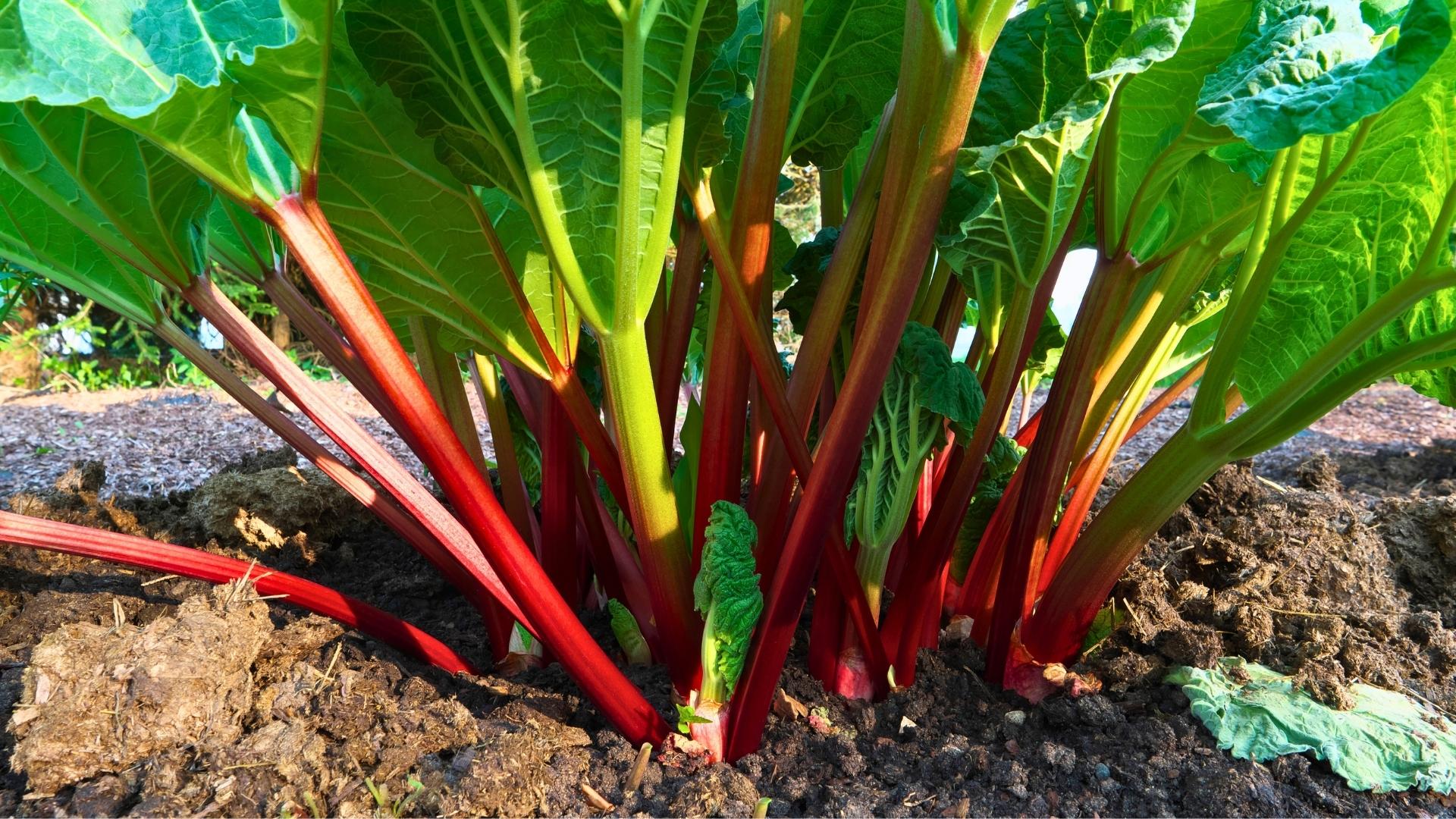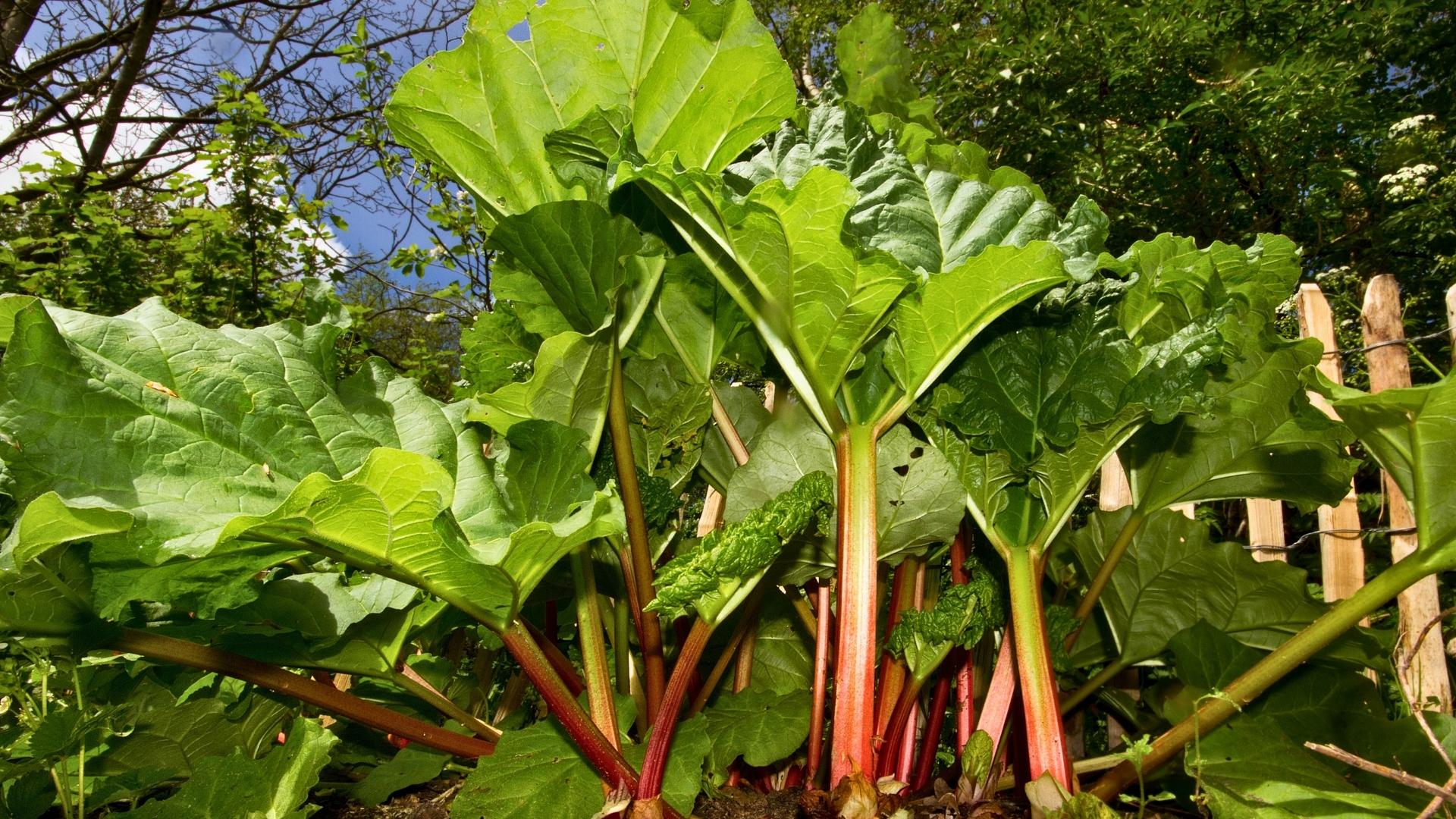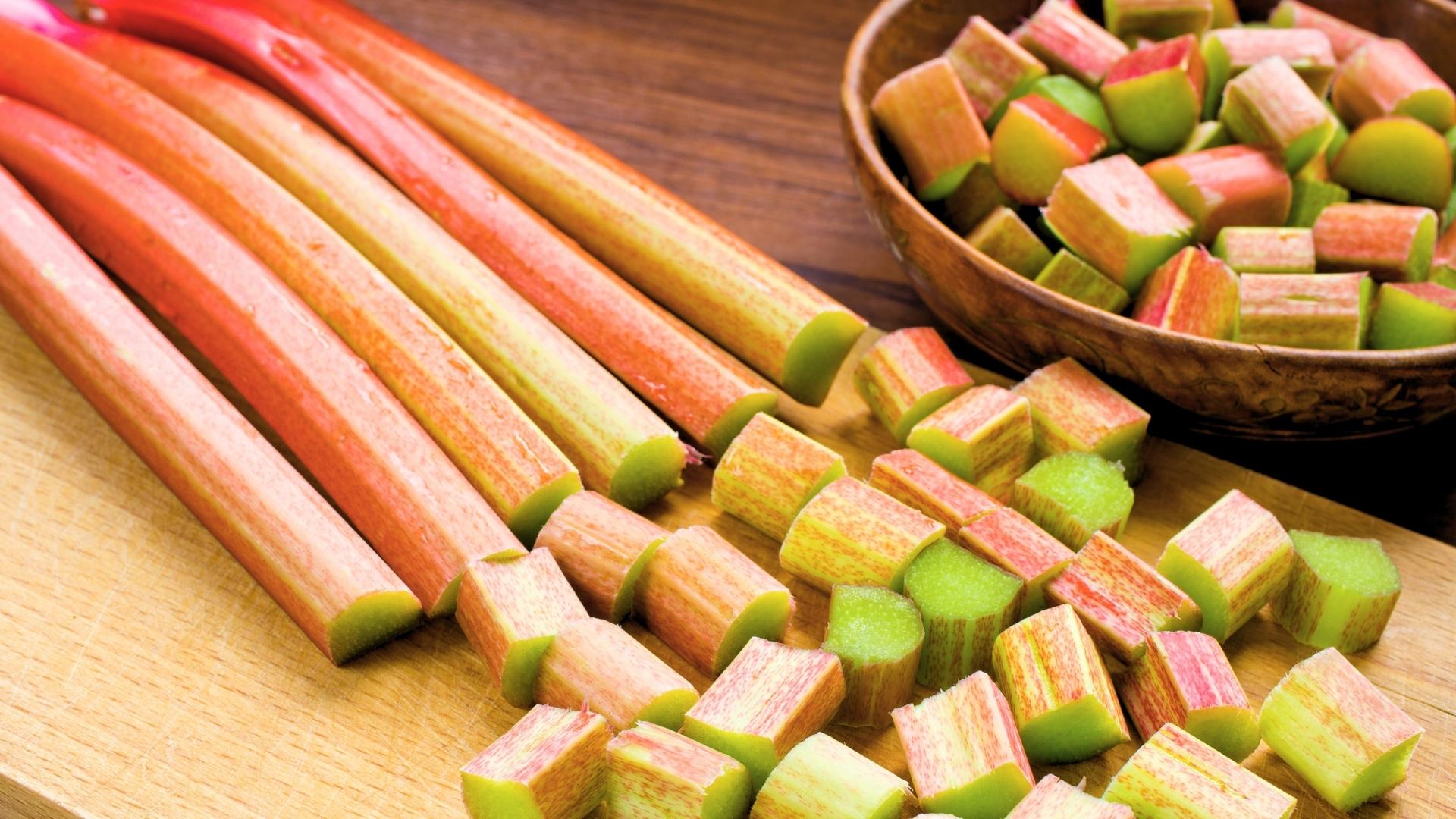How to Grow Rhubarb In Your Garden

Rhubarb is a long-lived perennial grown for its succulent, super-tart stalks. It is usually one of the first spring foods that can be eaten from the garden and at any time of the season it provides a good excuse for making pie.
Rhubarb is one of the least demanding of all crops. Once established, there’s little work required. A happy plant will produce for decades. Grow rhubarb in full sun, in rich, lightly moist soil. In hot regions (USDA hardiness zone 6 and higher), plant rhubarb where it will get some protection from hot afternoon sun. Rhubarb will not thrive in a soggy location, where it will be susceptible to root rot, one of the few problems rhubarb can encounter. If your soil is heavy and doesn’t drain well, raised beds are a good option.

Rhubarb is a great pass-along plant. One way to get your rhubarb patch off to a fast start is to talk a fellow gardener into giving you a “chunk off the old block.” The best time to do this is in early spring before the plant’s leaves begin to unfurl. Use a sharp spade to slice down through the crown, taking out a piece with at least two pink knobs on top. You can also purchase container-grown plants from a garden center.
When preparing the planting hole, remember that this is a perennial plant that will grow for many years in the same spot. So dig a deep, wide hole (18″ deep and 18-24″ wide) and partially fill it with a 50:50 mix of compost or aged manure and good garden soil. Add a cup or two of all-purpose organic fertilizer and then place the roots in the hole and continue filling it, making sure that the buds end up 1-2″ below the soil surface.
It is important to keep rhubarb plants well-watered for the first year or two. Mulch will help to minimize water loss and maintain a more consistent moisture level. To maintain good production, add a few shovelfuls of compost around the crowns each spring.

At maturity, a rhubarb plant gets to be about 3 feet in diameter, so plant them 3 to 4 feet apart in a 3- or 4-foot-wide bed. Four to six plants will provide plenty of stalks for most families. Harvest sparingly, starting in the second year. Rhubarb sends up Jack-in-the-beanstalk like flower stalks, sometimes reaching 6 feet tall. They are decorative, but use up some of the plant’s energy. Remove the flowers as soon as they begin to form and you’ll be able to keep picking tender rhubarb stalks right through the summer and into the fall.
Where to Plant Rhubarb
Keep two things in mind when choosing the location for your rhubarb plant. First, because rhubarb is a perennial, it will grow back and grow larger in its location for years. Ideally, the spot you choose should be a permanent one. (Though you can always divide the plants if they get too big.) Second, rhubarb likes a lot of light, so look for a spot that gets full sun. Because rhubarb is a tall and attractive plant, you can also incorporate it into your landscape to have more location options.
The plants will spread between three to four feet wide, so space them apart accordingly. Dig a deep hole for rhubarb, and plant it with soil amended with compost. Be sure the soil around the rhubarb gets consistent moisture, but no standing water that could cause root rot.

How to Care for Rhubarb
One of the great things about rhubarb is that it’s low-maintenance plant, and will return every spring without any help at all. Give your new or divided rhubarb plants a year to get established. Be sure the soil around the plants stays moist, but not soggy. After the first year, your rhubarb will be strong enough that you can harvest the stems.
Mature rhubarb plants will send up towering flower stalks in early summer, with tight clusters of buds that open to pink flowers. You can let it flower if you wish, but if your goal is a large rhubarb harvest then you should cut the stalk away. Doing this lets the plant put its growing energy into the stems.
Some growers opt for forcing rhubarb. Learn how you can, too.
Tips for Growing and Harvesting Rhubarb
The rhubarb stalks are ready to harvest when they’re seven to 15 inches long. The color isn’t an indicator of ripeness, so don’t worry whether they’re red enough or not. (Here is our guide to picking rhubarb the right way.) You can harvest rhubarb beginning in spring and through mid summer. It’s then best stop harvesting, and to let the plant recuperate. It will store up energy to survive the winter.
Remember that only the stalks of rhubarb are edible. The leaves should be discarded, as they contain oxalic acid, which can be poisonous.

Introduction: What is Rhubarb and Why Should You Grow it?
Rhubarb is a perennial plant that grows in the wild, but it is not hard to cultivate and grow. Rhubarb is known for its tart and tangy taste, which makes it a great addition to many desserts.
Rhubarb can be grown from seed or from pieces of rhubarb root that have been collected from the ground in spring. It prefers well-drained soil with a pH level of 5.5-6.0 and full sun exposure without too much water or heat.
When Should You Plant Your Rhubarb?
Rhubarb is a perennial plant that needs to be planted in the spring and summer. It will grow for three to four years before dying back, so it needs to be planted every year if you want it to live longer than four years.
Planting rhubarb too late can result in poor growth, while planting it too early may result in poor harvest due to lack of sunlight and weather conditions.

How to Plant Rhubarb in the Garden?
Rhubarb can be planted in the garden either from seeds or by root division. If you are planting rhubarb from seeds, you should plant them about 2 inches deep and 3 inches apart. You should space the plants about 1 foot apart after they have grown to about 3 feet tall.
Planting rhubarb by root division means digging up your existing rhubarb plants and dividing them into smaller pieces of roots. Plant these smaller pieces of roots 6-8 inches deep, at least 10 feet apart from each other and spaced out 4-5 feet apart from the first piece of roots that you planted.
Which Varieties of Rhubarbs are Best for Your Garden?
There are many varieties of rhubarb, but the most popular commercial varieties are ‘Victoria’, ‘Siberian’, and ‘Swedish’. These three varieties have been bred for their unique qualities, such as their resistance to disease, cold weather, or drought.

Pests
The most common pest found on rhubarb plants is the red-legged fly. These flies lay their eggs on the leaves of the plants and when they hatch, they feed on the leaves, stems, flowers and roots of rhubarb plants which leads to reduced yields and plant death.
How to Harvest Rhubarb
The best way to harvest rhubarb is by cutting the plant at its base and waiting for it to grow back. The plant will die after a few days or weeks depending on the weather conditions.
When you have harvested your rhubarb, you can dry it in the oven or dehydrate it in an oven too. You can also freeze your harvest if you want to use them later on in the year.
Leave a reply














